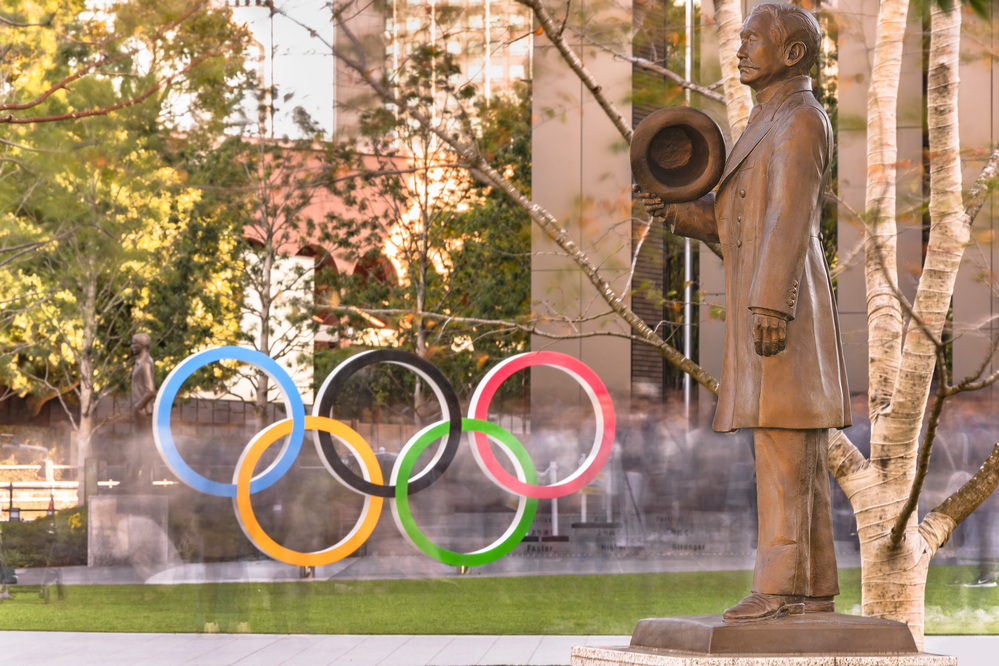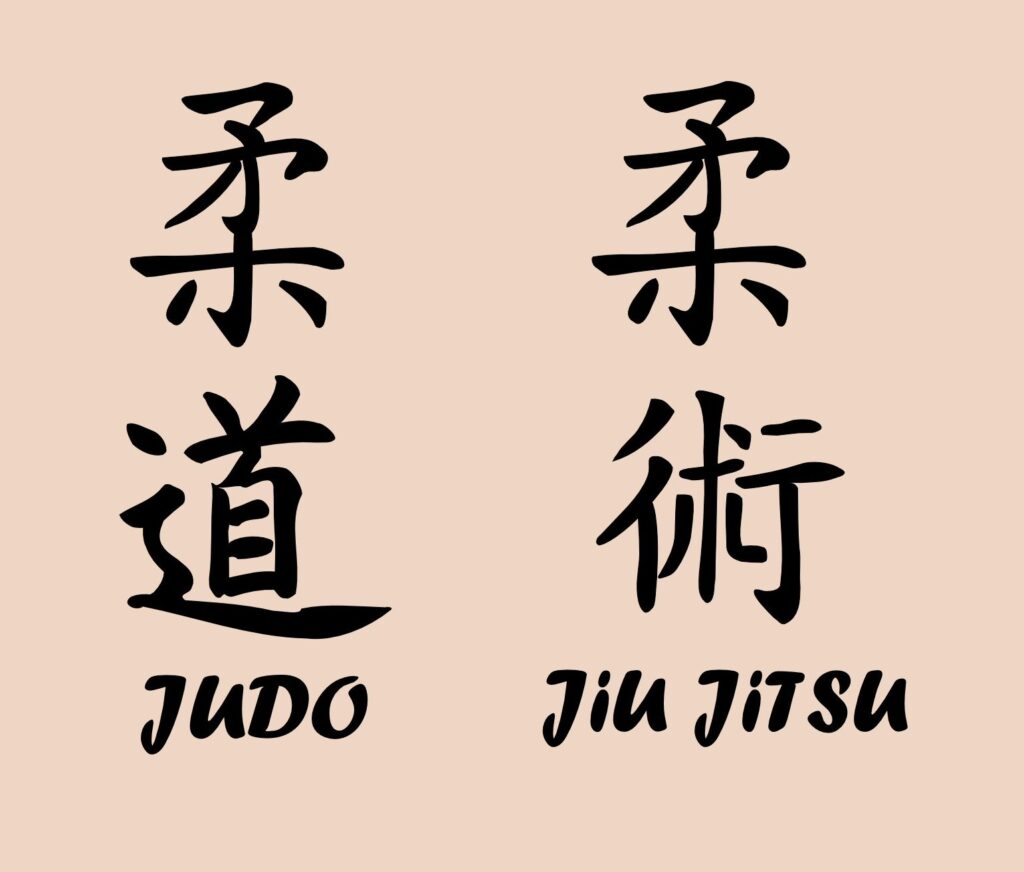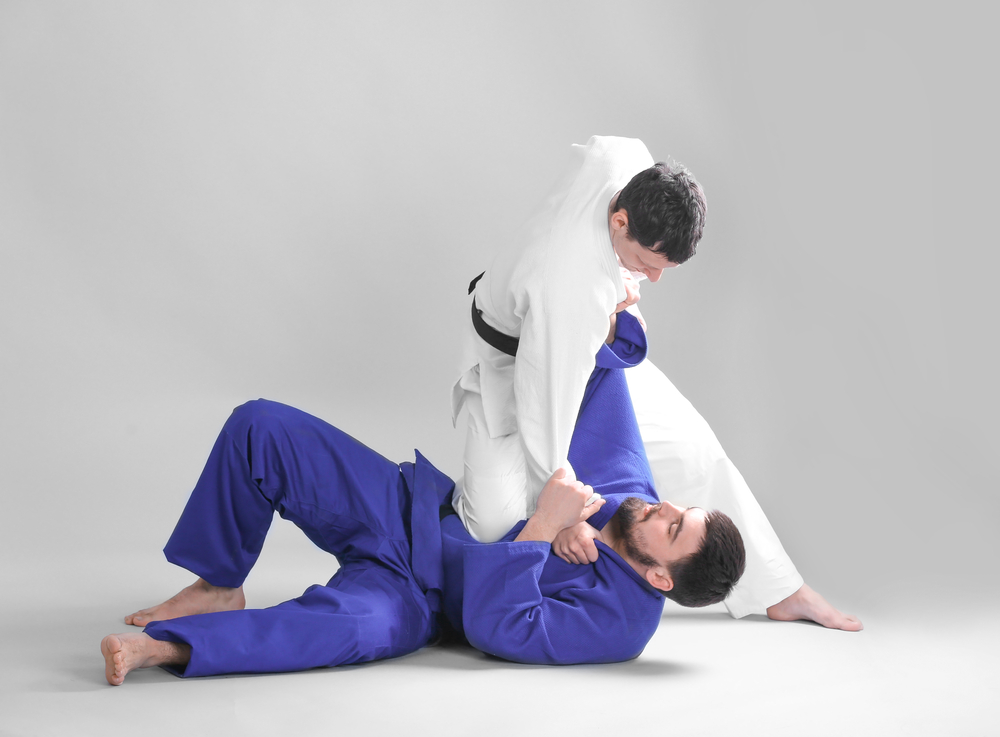The objective of this post is not to compare which is better or more effective, Judo VS BJJ.
But rather to show that Judo and BJJ are more similar than they are different.
It is mainly the original objective or purpose for the establishment of the arts as well as their modern rules sets that differentiate the two; Judo VS BJJ.
But they are in essence more similar than different.
This development of the arts and their intended goals also lead to the difference in expression of the two in their competition and training today.
So while much of the techniques, training and even terminology may be similar, it is the focus of the two arts and the purpose of their establishment that has lead to the major differences we see today between Judo vs BJJ.
Historical Roots
The current Olympic sport of Judo and the popular sport and martial art of BJJ or Brazilian Jiu Jitsu both have their roots in the battlefield Japanese fighting systems known as Jiu Jitsu.
Both Judo and BJJ focus on grappling and are drawn directly from the battlefield Jiu Jitsu techniques used in the warring period of Japan.

Japanese samurai were well versed in Jiu Jitsu as well weapons systems including archery and horse riding.
Jiu Jitsu developed as necessary unarmed techniques for a Samurai who lost their weapon and horse in battle.
Grappling, joint locks, chokes and strangles were developed in order to overcome the light but tough protective armor worn by Samurai which negated the benefits of striking martial arts techniques.
So, while Judo and BJJ draw their roots from the Japanese battlefield Jiu Jitsu; the path from Samurai battlefield techniques to Judo and BJJ practiced today are quite different.

In short Kodokan Judo developed directly from different styles of deadly Jiujitsu and focussed more on the grappling aspects. Gracie Jiu Jitsu or BJJ BRazilian Jiu Jitsu came from Kodokan student, Mitsuyo MAeda.
Maeda was a groundwork specialist and regularly fought opponents of different styles who were often bigger than him.
But lets look in more detail at the origins of Judo VS BJJ below.
Origins of Kodokan Judo
Kodokan Judo is basically the same Judo seen in Olympic sport Judo the world knows today. There are of course differences in Judo across the globe with distinct Europe’s. Style, Korean, traditional Japanese style and Merican Judo.
But all Judo today acknowledge Kodokan Judo as their root.
Kodokan Judo was established by Jigoro Kano in 1882.
Before establishing Kodokan Judo, Kano was a determined and committed student of traditional Japanese Jiu Jitsu that was used in warring periods of Japan.
His dedication and enthusiasm led Kano to become a Maser instructor in different schools of Jiu Jitsu at a very young age.
Many Schools of Jiujitsu in Japan
At the young age of 19, Kano became the Master of the Fukuda Dojo where he first began training Jiu Jitsu under his firts Jiuj Jtsu teacher Hachinosuke Fukuda.
This was after the untimely death of Fukuda and request by Fukuda’s family that Kano succeed his Master as the dojo head.
Fukuda’s dojo represented a combination of two diffrent schools of Jiu Jitsu which was the “yoshin ryu” and the “Shin ni Shinto ryu”.

It must be understood that in Japan Jiu Jitsu is an umbrella term for many different schools or styles of martial arts.
Kano advanced his martial arts study and knowledge by also becoming a Master instructor in the “Tenjin Shinyo ryu” school under Masamoto Iso.
Kano soon realized that each school of Jiu Jitsu had distinct strengths and he began to study various style in depth.
Kodokan Judo is Born
In 1882, Jigoro Kano opened his own school, calling his art “Kodokan judo”.
By changing the name, Kano hoped to differentiate his teachings from traditional Jiu Jitsu which was a complete combat system utilized by the Samurai on the battlefield.
The term Kodokan translates to mean ko (lecture, study, method), do (way or path), and kan (hall or place). Thus it means “a place to study the way”.
The Kodokan had three broad aims: physical education, contest proficiency and mental training. In developing his Judo, Kano also began to incorporate the principles of body, mind, and character development into the philosophy of Judo.

Professor Kano became the first Asian member of the International Olympic Committee in 1909 and worked for the spread of Judo across the world.
Judo became an official event in the Olympic Games of Tokyo in 1964.
Origins of Gracie Jiu-jitsu/Brazilian Jiu-jitsu
The historical roots of BJJ began with one of Kanos top students Mitsuyo Maeda.
Mitsuyo Maeda was born in 1978, in Funazawa Village, located in Hirosaki City, in the Japanese prefecture of Aomori.
Martial arts and fighting were a part of his family tradition as he was the son of a sumo fighter.
Mitsuo Maeda began training at the Kodokan in 1894, eventually becoming one of Kano’s top students. While well-versed in throws and take downs, Maeda’s specialty was ground fighting or newaza.
Maeda was also a proud proponent of the real fighting and self defense applications of Kodokan Judo.
Maeda and other Kodokan masters began to travel the world demonstrating the effectiveness of their Judo against larger and stronger opponents by taking away size and strength advantages.
This was achieved through taking the fight to the ground and applying newaza techniques and tactics.
In 1914, Maeda traveled to Brazil, where he befriended a businessman named Gastão Gracie.
Maeda would eventually accept Gastão’s son, a teenager name Carlos Gracie, as his student.
Carlos would begin teaching in Brazil and his younger brother Helio would also learn the Judo taught by Maeda.
Eventually Helio Gracie would develop his own expressions of the techniques taught in Judo.
This lead the development of Gracie Jiu Jitsu and the BJJ that we know today.
Similarities – Judo VS BJJ
Jiu Means ‘Gentle’
The common roots of Judo and BJJ are evident in the character Jiu or Ju in both martial arts names.
This jiu/ju represents gentleness or replying less on strength and force and more so on technique.
In BJJ the concept of leverage is a foundation which is also part of any Judo throw.
By utilizing the larger muscle groups of the legs and hips a smaller person is able to effectively execute BJJ techniques on a larger stronger opponents.

The off balancing or kuzushi that is the foundation to any Judo throw also is key for BJJ in executing sweeps and gaining a superior position.
Both these key concepts of leverage and off-balancing an opponent are also related to jiu/ju as force, size, strength or even aggression is bit required to execute these effective martial arts techniques.
Randori and Rolling
A unique aspect of Kano’s art, which would eventually come to be known as Judo, was its emphasis on live sparring, also known as randori.
Through randori, Kano’s students practiced throws, takedowns, joint locks, and chokes against resisting opponents.
Judo’s implementation of randori represented a major departure from the prevailing training philosophy of the time, which favored compliance-based drilling over full-contact sparring.

This is the method also used by BJJ schools in modern times where the live sparring is known as ‘rolling’.
In comparison to other martial arts, especially striking base darts, where it can be risky to spar hard every training session, the more grappling and submission based techniques of BJJ and Judo make hard sparring safer and can be done every training session.
Both Judo & BJJ are Great for Self defense
Bjj is well recognized as an applicable self defense and the display og BJJ in popular MMA fights proves the effectiveness of the art.
Judo has developed to become more Olympic sport oriented in its teaching and training.
However self defense is still part of the higher levels of Judo learning and nage no kata is still required at high levels of black belt dan ranking.
BJJ of more specifically Gracie Jiu Jitsu originated form Kodokan Judo. In fact all BJJ is said to be drawn from Gracie Jiu Jitsu that was developed by Helio and his brother Carlos Gracie.
Many people argue that judo is better for stand up grapplin and BJJ the ground.
Others say that Judo trains bothe ground (newaza) and standup so is more complete. It is true that many sport oriented schools focus less on stand up grappling and more on guard and ground techniques.
However the gracie schol and original gracie self defense still pays great detail to take downs and stand up grappling in its base techniques.
The Samurai Spirit
The fighting spirit of the Samurai is present in both martial arts to a great extent.
Olympic Champion Kosei Inoue is known for displaying the heart of the Samurai in all his competitions. Notably when ahead on points, Inoue was still known for going for the fight ending ippon and risking a loss.
Rickson Gracie probably displays the heart of the Samurai more than any other Jiu Jitsu practitioner. His legendary fights such as his defeat of the giant Rei Zulu at only 21 years old, make him a legend of Jiu Jitsu in the modern age.
Both Judo and BJJ originally only wore white gis.
White represents death in Japanese culture and Samurai wore white under their armor symbolizing they were ready to die each time they went to battle.
This is also symbolized in both Judo and BJJ white gis. Blue gis arose out of competition and to make judging and spectating easier.
Differences
Gracie Jiu Jitsu/BJJ Has More of a Self Defense Focus from the Beginning
A major difference between Judo and BJJ is in the real world application of techniques for self defense.
Even within BJJ itself this distinction is made with the Traditional Gracie schools focussing on self defense first.
The sporting and enjoyable rolling or randori is secondary to street applicable self defense.
Judo was developed by Jigoro Kano as a system if self development using Judo as a major tool toward that goal.
Self defense and specifically the nage no kata is not the focus for anyone starting Judo. This is also true for BJJ schools that focus on sport competition .
Traditional Gracie Jiu Jitsu focuses in self defense from the beginning.
In Judo it come at the end at higher levels of black belt. Usually after a person’s competitive career is already over as a Judoka.
Availability of gyms Judo vs BJJ
As an Olympic sport with a fairly long world history dating back to the 1964 Tokyo games, Judo has a long established history in many countries around the world. From Africa, Europe, North and South America, Asai and Oceania there are Judo gyms to learn and train at.
BJJ by comparison gained popularity following the UFC tournaments in the early 90s.
And really it has grown even more since the UFC became popular, and MMA fighters have made BJJ popular in the mainstream.
It is definitely more likely that you will find a Judo gym over a BJJ gym in most of the World today. This is even more so in developing countries where World Judo has targeted specifically for assistance for many years.
Judo vs BJJ : Which to learn?
It depends a lot on your goals and the availability of schools and teachers you can access.
If you want to compete regularly then Judo and sport BJJ are good options. If self defense if your main goal or even MMA then Gracie Jiu Jitsu and affiliated schools focus more on ‘grappling with punches’ which is very different from sport BJJ.
As discussed above Judo gyms are probably more available world wide over BJJ gyms. This is especially so in developing countries across Africa, Asia and Oceania.
So for many people Judo is a better option as access is more readily available and also most likley cheaper than BJJ classes in many cases.
Judo is Still Great Real World Fighting
Even learning the sport aspect of judo will help anyone with self defense.
Competent fighters such as Ronda Rousey, Karo Parisyan and of course Mitsuyo Maeda himself all fought effectively with a strong foundation in Kodokan Judo.
The regular sparring (randori) in Judo along with techniques that a smaller person can execute on a larger person make judo great for real life grpaploing and self defense.
Even being able to pin someone to the ground until they gas out and submit is a major part of judo newaza and highly applicable to self defense.
References
https://www.graciemag.com/en/the-saga-of-jiu-jitsu/
https://evolve-mma.com/blog/the-history-and-origins-of-brazilian-jiu-jitsu/
https://www.graciemag.com/en/the-saga-of-jiu-jitsu/



